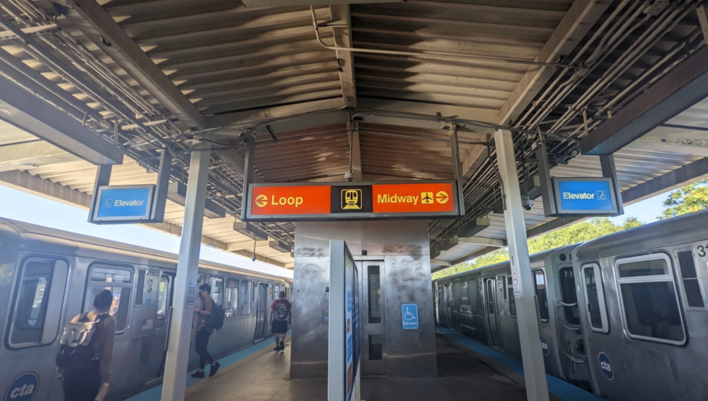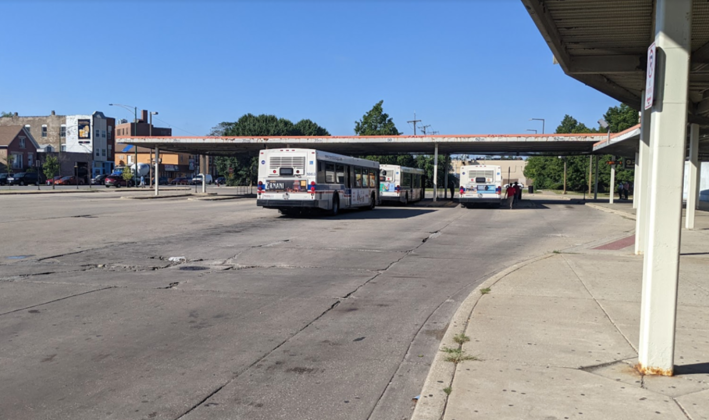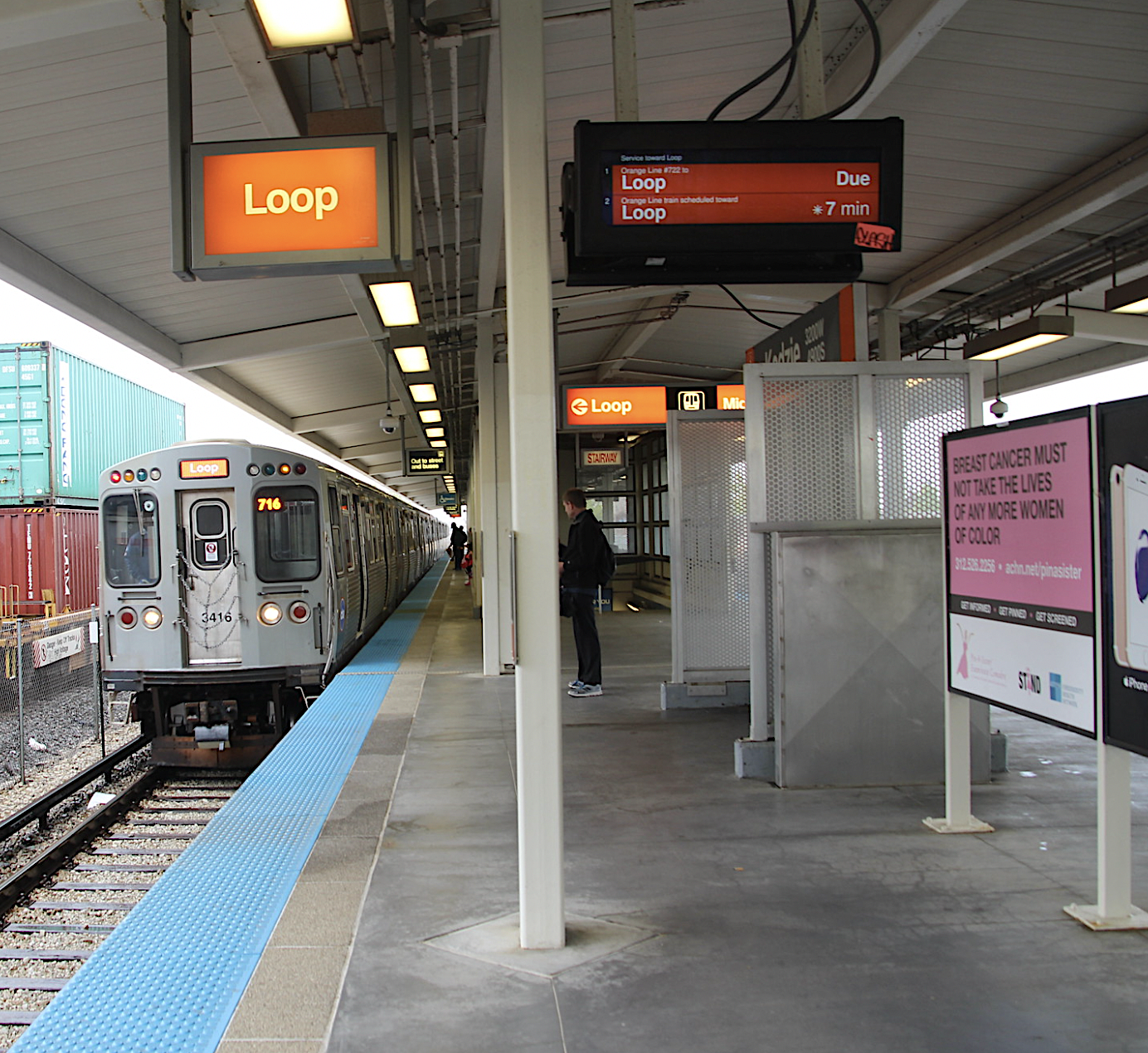Para leer este artículo en español, haga clic aquí.
Southwest Side CTA riders have continued to experience delayed service due to COVID-19 labor shortages, but not all trains and buses have been equally affected. Since January 2022, as customers have entered any CTA station they’ve been greeted by a customer alert on a screen that warns them of potential delays caused by staffing problems. One of the most frustrating issues has been the CTA’s failure to acknowledge that it doesn’t have enough bus and train operators to provide all its scheduled service. The Bus and Train Tracker apps have continued to show ghost trains and buses – runs that disappear from the screen before they arrive.

People online began documenting the discrepancy between the trackers and actual servers. Many, including alderpersons, have been calling on CTA to address service challenges. A couple of weeks ago, CTA president Dorval R. Carter Jr. finally announced an action plan that focuses on addressing customer concerns, including reliable service. It seemed that the CTA finally listened to Chicagoans’ desperate need for reliable and safe service, while acknowledging its staffing limitations. However, will this be enough? Will the action plan help alleviate problems with reliability, crime, and unsanitary conditions on trains?
These past few weeks I assessed how my transit commute compared to what it was like in the beginning of 2022. As I rode buses and the ‘L’, most of the trains were on time but the ones that weren’t on time were extremely delayed, or else ghost runs that never showed up at all. Delayed and slow bus service continues to be the most obvious problems. Almost every bus I wait for is later than the CTA Bus Tracker or Google Maps says it will be. I wondered whether other Southwest Side CTA users have noticed any changes in reliability recently.
I interviewed people on Orange Line and Pink Line platforms and made a social media request for feedback from Southwest Side residents. Most of the CTA riders I spoke with live in Little Village, McKinley Park, Brighton Park, and Archer Heights, and therefore, most of them were Orange Line and Pink Line riders.

The most common complaints were train delays during the evening rush and at night. Stacy, from McKinley Park, who was on her way to work when I interviewed her, said that delays on CTA have always happened but she did notice they got worse during the pandemic. She thinks the Orange Line is more reliable than other lines, especially compared to the Red Line. Many other riders commented about Red Line service being patchy, adding that they felt less safe on that line.
Kevin, who has used the transit system for the past seven years, said CTA delays were nothing new for him. He travels all over the city and said he has always experienced delays, but the pandemic has exacerbated the issue.
A few riders commented that trains are more reliable than buses and some avoid buses altogether, especially during rush hours. Two residents said they have had to take expensive ride-hail trips after a bus or train didn’t show up, and another CTA user talked about having to walk home late one night because of a near 40-minute delay.

A few Little Village residents complained that wait times for the buses on weekends extend beyond 30 minutes. Routes such as the #82 Kimball-Homan (which runs betweenDevon/Kedzie and Lawndale/31st), the #60 Blue Island/26th, and the #21 Cermak are buses that are often delayed.
What is obvious is that while train delays do happen, buses are even less reliable, especially in the evenings when students and workers are heading home. That’s no surprise, since car traffic is highest during those times, and buses get stuck in the driver-created traffic jams.. Transit riders also experienced delays on weekends when there may be fewer people using public transportation.
Problems with the CTA extend beyond reliability. The increase in violent crime, plus quality of life issues like smoking and littering, during COVID have caused many people to be concerned about the state of Chicago transit. And while in March the CTA announced it would deploy more unarmed security guards to deter crime, that doesn’t address the root causes of violence and homelessness on transit, including inequities in housing, education, job opportunities, and healthcare.
How will CTA’s action plan affect reliability, safety, and customer satisfaction? Only time will tell whether residents all over the city see improvements by the time winter arrives, when delays in cold weather will push people to abandon the CTA for other modes of transportation that are more reliable, safe, and comfortable.






